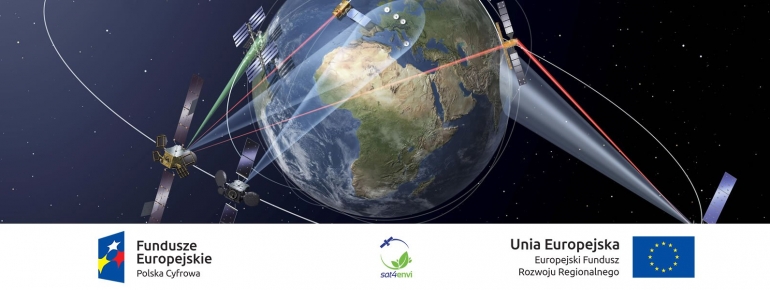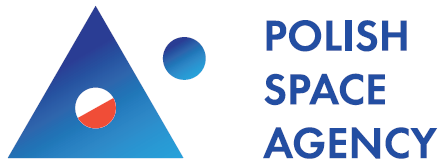Capacity building in the public sector to use satellite-based services: Poland paves the way

With the recent foundation of the Polish Space Agency (POLSA) in 2014, and the adoption of Polish Space Strategy in 2017, Poland is showing a growing interest in space-based technologies. One of its objectives is to increase the use of geo-information based services and data by public administrations.
The Polish Space Strategy translated on the ground into several initiatives. The Sat4Envi initiative, among others, is an operating system for gathering, sharing and promotion of digital satellite information about the environment. This national initiative aims to provide civil servants with better tools to manage public services, contributing to the public administration’s transition towards a digital economy. Its design ensures easy satellite data access and promotes satellite data utilisation in public administration at various levels. The initiative includes a satellite data archive, a training centre, and a centre for sharing scientific information concerning satellite imagery. This newly established online platform will enable constant storage and processing of data. The aim is to distribute it for a broad range of scientific, strategic and civil security purposes, such as environmental protection, development of transport networks, or emergency management.
The project, led by the Institute of Meteorology and Water Management – National Research Institute (IMGW-PIB) will provide the constant collection and processing of data from weather and environmental satellites such as the European Copernicus Programme. Sharing a huge amount of data is not an easy task. The European Union’s Copernicus Sentinel satellites alone produce over 16 Terabytes per day, thus data volume and size can hinder usage and accessibility. Sat4Envi is supposed to bring a solution to that problem. Specialised receiving stations enable data accumulation in real time. All of the collected data is then transferred to a computer archive where it can be converted according to the users’ needs on request. Following an open data policy, the newly established platform is freely available to citizens, public administration and scientists interested in up-to-date satellite data.
The Sat4Envi project is co-financed by European Union funds in the framework of the Operational Programme Digital Poland. The project is conducted by the Institute of Meteorology and Water Management – National Research Institute in cooperation with the Polish Space Agency, the Space Research Centre – Polish Academy of Sciences, and the Academic Computer Centre CYFRONET AGH.
What is the purpose of Sat4Envi?
Sat4Envi promotes the use of satellite data in various environmental fields. For example, satellite data helps to make accurate predictions or can monitor the effect and assess the damage of natural disasters. Serving urban areas, as well as forestry and agriculture, orbital imagery can give new insights into land management. These range from monitoring changes in terrain, to the detection of illegal logging of forests. Emergency management, land use planning and environment management are fields of national interest under the responsibility of Polish public administration. Whilst decision-making processes in these fields benefits from satellite-based services, public administrations face organisational and technical challenges in adopting such services. For this reason, POLSA is developing an educational and training programme concerning the use of imagery and services based on satellite data. It is specifically designed for public administrations officials.
For this reason, POLSA is developing an educational and training programme concerning the use of imagery and services based on satellite data. It is specifically designed for public administrations officials.
How did Eurisy contribute to this project?
In 2015, Eurisy supported POLSA with a study on the operational uses of satellite-based services by Polish public administration offices across the country.

Following the report, based on the information collected through surveys and feedback provided by 45 Polish public administrations, a user forum took place in Warsaw. To favour the uptake of satellite-based services within the public sector in Poland, one of the most important outcomes was the training of staff. In 2018, building upon the recommendations of the report and the event, POLSA performed an additional extended survey of the digital competences of Polish public administration bodies. It examined the status of satellite data utilisation, its potential use to support public tasks, existing barriers and perceived needs regarding training course curricula.
What will the training programme look like?
Taking into account the scope of tasks and requirements of each specific public administration, the training programme will provide hands-on competences for satellite data use. These courses will last two days and will cover training on searching, downloading, visualising, presenting, processing data and more. Furthermore, data analysis and interpretation of processing results are on the agenda, as well as using model practices to save public administration official time and financial expenses. The courses will also cover practical aspects regarding satellite data and related products procurement practices.
The training courses consist of two different levels. A basic level course, dedicated to the management, and an advanced level course, dedicated to specialists. The advanced training modules are divided into eight separate thematic sections: spatial development, agriculture, road infrastructure, water management, forestry, environment, emergency management, and historical buildings and monuments protection. The budget of the project will allow for the training of 300 public sector employees. Since the application opened in early January, more than 150 trainees have already registered. Among the participants are local civil servants, as well as public government representatives along with institutions under their authority or supervision.
Eventually, POLSA’s objective is to set-up a permanent training service due to open in November 2020. Until then, its mobile element, established by the Crisis Information Centre is already in place for emergency and rescue management. This part of the training programme delves into satellite data use to forecast and monitor natural and construction disasters, road accidents, pollution and contamination.
Will it remain a national project?
The Sat4Envi project highlights the importance of building capacity and fostering knowledge within public institutions so that they optimally benefit from satellite-based services. For now, Sat4Envi remains a national initiative with a focus on public sector users. Eventually, the initiative could also target private sector stakeholders – as the interplay between public and private sectors is key in order to boost a satellite-based services ecosystem. For example, services not dealing with national interest but with less sensitive data, could be outsourced to private companies.
The public administration’s feedback on their use of satellite-based services could also be a lucrative opportunity for service providers looking for ways to improve and validate their services. Furthermore, similar European and global platforms are already out there. The Global Earth Observation System of Systems (GEOSS) provides a single-entry data point for the transformation of Earth observation data into services for citizens, industry, decision-makers and researchers. Europe’s contribution to this system is coordinated through E-SHAPE, a Horizon2020 project. With Sat4Envi, Poland gives another excellent example of cross-border data use. The available data from Sat4Envi already includes a 500 km buffer of Polish territory surroundings, serving cross-border cooperation and reporting on topics such as water management. Meanwhile, the Polish training programme has the potential to act as a catalyst for more regional cooperation amongst Central and Eastern European countries in the field of Earth Observation. It could serve as an example for other countries to replicate within their own administrations.
